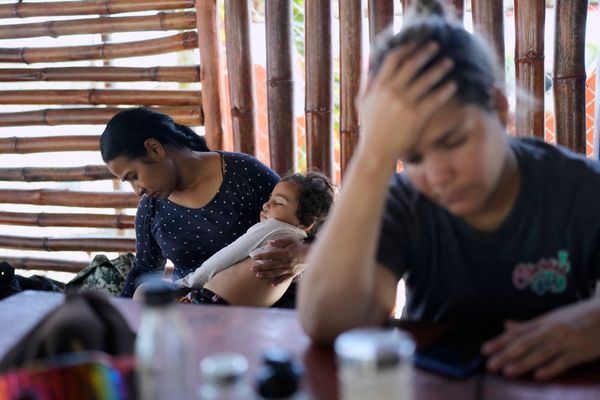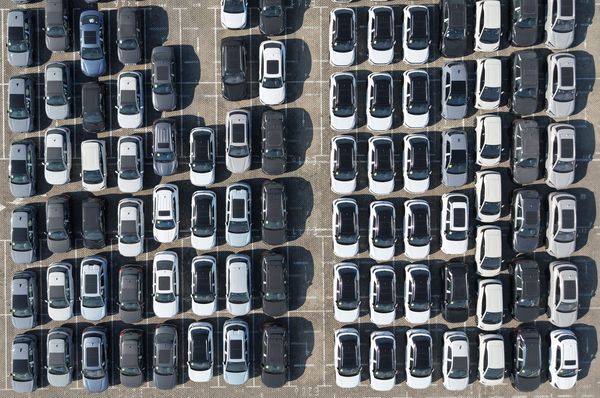
Support truly
independent journalism
Our mission is to deliver unbiased, fact-based reporting that holds power to account and exposes the truth.
Whether $5 or $50, every contribution counts.
Support us to deliver journalism without an agenda.

Louise Thomas
Editor
Valeria, a popular TikTok influencer, uses her perfume until it runs out. She buys one candle at a time, and won’t replace it till it burns entirely. She has a single, small makeup bag that fits all of her products, and has been using the same water bottle since 2019. A video in which she explains all this has also been viewed more than 13,000 times. This is “underconsumption”, a new lifestyle trend that has encouraged thousands of people to show off their empty bottles – of everything from shampoo to face creams – in an effort to highlight their resistance to throwaway consumerism.
On TikTok, people are calling it “underconsumption-core” and there are umpteen videos explaining what it means and showing people how to practice it themselves. Clips show women flashing empty eyeshadow palettes to the camera and cutting open near-empty foundations to scoop out the remnants and dispense them into other, smaller pots. Then there are videos in which people line up empty bottles in their bathroom and brag about having used the same hair curler for a decade. But why is actually using all of the stuff we buy suddenly cool? More concerningly, what on earth was everyone doing before?
“This trend seems to stem from a combination of factors, all pointing towards a more mindful and deliberate approach to consumption,” says Sophie Attwood, founder and CEO of global communications agency SA Communications, which represents beauty and health clients. “It reflects a broader societal shift towards more responsible consumption patterns, where the value of a product is measured by its longevity and efficacy rather than the frequency of purchase.”
It also might be proving popular simply because it’s normal. “There’s an element of relatability to it,” adds Jessica Parr, director at Space Doctors, a creative consultancy that works with global beauty conglomerates such as L’Oreal and Coty. “Many young people can’t afford to buy thousands of products, but are happy that they can actually participate in the underconsumption trend.” Perhaps it’s also a delayed response to some of the viral purchasing trends that tend to dominate TikTok – think the Stanley cup, an enormous and suddenly ubiquitous travel cup that became an inexplicable must-have earlier this year.
It’s something that feels particularly prevalent among Generation Z, who are more resistant to fast fashion, and hungry for environmentally friendly and ethical trends – they’ve been previously hailed “the sustainability generation”. “Young consumers, in particular, are fed up with trying to keep up with a constant slew of newness, and many are turning to the ‘under-consumption’ trend on social media as a way to live more modestly and within budget,” says J’Nae Phillips, senior insights editor at leading consumer insights agency, Canvas8.
Of course, budget comes into all this. We are in the middle of a cost of living crisis that has seen people being forced to make major adjustments in all areas of their lifestyles, from housing to employment. So it makes sense to want to use up all of your moisturiser before buying a new one. I’m just not entirely sure it makes sense to post about it online in a strange, romanticised way – it suggests that this is a choice, when for most people it’s a necessity.
Ask yourself why you want it. Because of TikTok? Or because you’re competing with a friend, or because of a celebrity, or status? If you can see a need, or [want to] fulfil a genuine desire [and know] that it will bring something new to your life, then go for it, and choose well— Melanie Rickey, The Enoughness
Slowly, though, some social media users are wising up to this. Videos are becoming increasingly bombarded by comments criticising the trend and pointing out the bizarre hypocrisy of fetishising behaviour that is, for most people, the norm. After all, isn’t it only uber-wealthy people who can afford to excessively buy new products without having to use them all up first?
“This trend is baffling to me as someone who lives in a developing country,” one Instagram user commented on a recent “underconsumption-core” clip. “‘This is all the makeup I own’ – yeah well I’d f***ing hope so? If this is called ‘underconsumption’, what is the normal consumption rate in developed countries? Are they just buying new s*** every week and disposing their waste to the planet and poisoning the rest of us with microplastics?”
Another person added: “This is just how average people live … Is social media and pop culture really rotting our brains so much where this is considered underconsumption? Looking through other comments, it’s not just me who feels this.”
Indeed, it isn’t. But the fact that this is a trend at all speaks to a wider problem. “Underconsumption-core” suggests that those who use up their products are a minority – that to squeeze every drop from a tube of moisturiser is a novelty rather than the norm. Not only is this mode of thinking environmentally disastrous and financially daft, but it highlights just how excessive our consumption levels have become across the board. Using products until they’re empty shouldn’t be a trend. It should just be expected.

As a result, real underconsumption might look a little different to what we’re seeing all over TikTok. It should be about starting meaningful conversations, and challenging our behaviour as well as other people’s. In short, it needs to go beyond a 30-second video. One person doing just that is writer and broadcaster Melanie Rickey, who runs The Enoughness, a platform designed to popularise underconsumption or, as she puts it, “the knowledge that we can have exactly what we need to thrive, and we can strive better if we know exactly what we need”.
On Rickey’s platform, and through her podcast of the same name, she interrogates the psychology behind overconsumption, both in the fashion and beauty spaces, and offers advice on how to break unsustainable consumer habits. “The outcome is you feel better in yourself,” she explains. Rickey’s “enoughness” concept is based on the idea that there is a direct connection between feeling good on the inside, and recognising how and why you’re consuming products. In other words, she wants people to consume more consciously and with intention, as opposed to mindlessly buying things for no real reason. “I live this way, and it’s brilliant – I have exited the overconsumption machine,” she adds. “I can be extremely happy with everything I choose to have, and I still shop, but not in a way that is pointless or damaging.”
Beyond simply using the items you have until they’re finished, Rickey suggests also examining yourself every time you seek to make a new purchase. “Ask yourself why you want it. Because of TikTok? Or because you’re competing with a friend, or because of a celebrity, or status? If you can see a need, or [want to] fulfil a genuine desire [and know] that it will bring something new to your life, then go for it, and choose well.”
Perhaps the fact that underconsumption has become a trend in the first place shows how far social media has gone in terms of promoting overconsumption. “Influencer shopping hauls and a barrage of products are constantly pushed to people on social media,” says Phillips. “With products often going viral on TikTok and platforms like Facebook and Instagram increasingly leaning towards sponsored, ad-based content, consumerism is at an all-time high – anyone who spends time online is buying things on a whim, which can often lead to feelings of guilt and overwhelm.”
Ultimately, then, it should feel like a positive step that the opposite is now being celebrated. But let’s not forget that trends are defined by their ephemerality. If sustainability is something these underconsumption-core TikTokers are truly concerned about, then a bit of rebranding is needed. Because underconsumption is not hip, new, or cool. It’s just a very regular way of life. At least, it should be.







